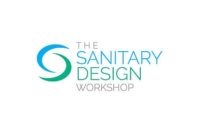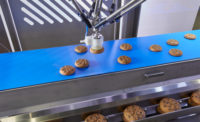During Good Manufacturing Practices (GMP) inspections, the most commonly found nonconformities are associated with food-safety maintenance. Typical nonconformities are often rooted in inadequate equipment design, poor or substandard construction materials, inadequate finishing and installation, difficult or no access and the lack of appropriate and timely cleaning and maintenance.
These problems and conditions can result in lower inspection ratings and higher risk adulteration of the manufacturing environment and product. Normally, such nonconformities are resolved via corrective actions and, in most cases, that’s the end of the story—until the next inspection, when new or old nonconformities are identified, scheduled or rescheduled for further corrective actions. This never-ending cycle of addressing the symptoms instead of the root causes due to an unsanitary design is both wasteful and, from a regulatory point of view, indefensible.
One important contributor to this cycle is the traditional approach to equipment purchasing: Defining functional specifications and purchasing based on invoice and installation costs, with an estimated return on investment (ROI) developed on labor reduction, speed increases and volume expansions. The maintenance and cleaning requirements and frequencies are explored and understood on a lesser level. By the time post-installation operations are understood, it’s often too late. New problems lead to added expenses, lower productivity, higher operating costs, lower gross margins and unsanitary conditions.
Consider the impact of the downtime needed to clean and sanitize a piece of equipment. If it takes an operator 20 minutes to disassemble and re-assemble option A, and two minutes to perform the same activities on option B, the resulting differential in productivity is significant. Assuming each piece of equipment is cleaned weekly, option A requires 900-plus more minutes of service annually then option B. This extra time equals 15 hours of productivity loss during the year. If option A outputs 200 pieces per minute, then capacity is increased by approximately 200,000 units. What does this do to cost per pound, if this is extrapolated to multiple lines? Real money!
Another benefit of well-designed equipment is that it frees up manufacturers to do value-added cleaning, sanitation and maintenance. Factoring sanitation into equipment design makes it easier to clean critical parts, such as food-contact surfaces or indirect surfaces in the product zone. As a result, verification activities may result in fewer nonconformances, thus reducing repeat cleaning activities.
For instance, if a cleaning activity amounts to 0.005 cents per unit for a given production line, then a re-cleaning may bring this cost up to at least 0.01cents per unit. However, if production downtime is added to this re-cleaning activity, the final cleaning costs per unit produced on this line will be higher. Once these costs are multiplied by millions of units produced, the absolute dollars lost can run into the hundreds of thousands per year or more.
A robust, sanitary equipment design can take these scenarios into account. A total cost approach in design more than offsets costs associated with re-cleaning activities. A good sanitary design makes it easy to access, clean and maintain the equipment. The easier these functions are to perform, the more likely they will be done correctly the first time.
The high cost of design flaws
Equipment design flaws that contribute to product accumulation can attract and harbor insects and rodents. Pest activity can contaminate product surfaces and products, triggering additional unplanned deep cleaning, pesticide applications or rodent trapping. Unfortunately, such unplanned situations are rarely captured in the ROI analysis. If addressed at the equipment purchase and production design stage, planned activities can be optimized and unplanned activities mitigated and minimized. The result is more production uptime, optimization of sanitation investments and overall lower cost per pound.
Similarly, tack or spot welding on direct and indirect food-contact surfaces makes it nearly impossible to clean or sanitize to required microbiological levels. As a result, the risk of product contamination is elevated, leading to increased re-cleanings and potential product quarantining and higher manufacturing costs. Eliminating spot welds in product zones and using continuous, smooth welding is one solution to these issues.
Premature deterioration of equipment surfaces and product adulteration due to incompatibility between surface materials and foods’ physical characteristics, as well as the chemical characteristics of the cleaning and sanitizing compounds, can lead to costly customer complaints and more frequent equipment and tool replacements. The right sanitary design could ensure the compatibility of equipment and tools with the type and concentration of cleaning and sanitizing compounds used, thus assuring a sanitary environment and the longevity of the equipment and tools.
Is there a better, more effective way to approach such equipment-design-rooted food-safety concerns? Could a sanitary design approach help lower food-safety risks, consumer complaints and the cost of goods sold? The answer is a resounding, “yes!”
André Biane is president and CEO of AIB International, Manhattan, Kan. Biane joined AIB in March 2013 and has more than 30 years in multiple executive and consulting roles with small to large companies.



